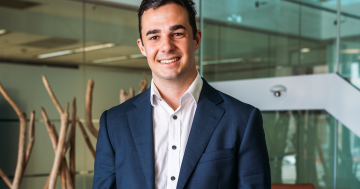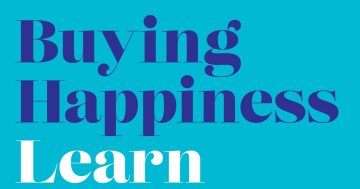Liam Thomson* offers some financial wellbeing tips.
 We live in a time where credit is generally accessible and not something consumers typically fear.
We live in a time where credit is generally accessible and not something consumers typically fear.
With wearables, phones and “old-school” credit cards allowing you to pay for nearly everything and anything effortlessly, it’s no wonder people are feeling stressed and anxious about money and their financial futures.
We think that financial wellbeing is a hot topic, but with countless blogs, books and podcasts telling you to do many different things to achieve financial wellbeing, we thought it would be useful to boil it down to just eight helpful tips.
- Be honest with your own money story
We think the reason so many people fail to succeed with New Year’s Resolutions is because they don’t adequately assess their ability to achieve those resolutions.
Launching into five personal training sessions per week when you haven’t been within a 10km radius of a gym in the last three years almost certainly spells imminent failure.
This same issue may arise by not being frank with yourself about your money situation.
Thinking you are better off than you might actually be can set you back.
If your situation is better than expected – awesome! This makes step 2 even easier.
We recommend opening a fresh spreadsheet and plugging in all the numbers (savings, debts, etc.) to see what your current financial situation is.
Always remember, no matter your situation, there are plenty of ways for you to get back on track.
- Get your debts under control
(This step applies if you realised that you might have some debt that needs paying off).
Debt is one of the primary causes of stress and anxious feelings about money.
By whatever means you wish, (slowly chipping away or blasting it away with accumulated savings), the sooner debt is gone, the sooner you can move on to building up your savings.
- Know how much you spend
Without knowing where your money is being spent, understanding how to cut back in certain areas or allowing yourself to budget is nearly impossible.
You can download your most recent statement from your bank to see your most recent month’s spending or fire up another spreadsheet and manually plug in the numbers.
We think using the last 3-6 months data will help you average out your weekly spend more accurately and give you a clearer idea of where those dollars are going.
- Set small, achievable goals
Want to save $10,000 by the end of the year? You’ll have to put about $200 away each week.
Be realistic with your savings goals and find an amount that is achievable for you, while also being honest about your financial situation.
We think it is important to ensure you still have a bit of wriggle room in your budget for unexpected expenses.
Everyone will have a different savings goal but pick an amount that doesn’t have a material impact on your day to day spending or add to your stress levels and instead starts putting you on track for your savings goal.
- Reverse save
Linked to the above step, reverse saving is the concept of putting money away to save before putting it into an account that you can spend from.
On payday, the amount that you decide you can live without (say 5 per cent) can be put towards your savings pool.
This way it doesn’t get accidentally spent and you ensure saving is your top priority, not an afterthought.
- Re-budget
Every few months, we think it’s important for you to check back in on your financial situation and adjust your budget as necessary to accommodate any changes in spending or income.
If you think you are now able to put slightly more towards paying off debts or savings, see if a higher amount works.
If you’ve been finding it hard to stick to your savings goal or pay down your debt, see if dialling it back will help you with setting an amended goal.
- Trade spending for saving
One of the hardest but most rewarding examples of opportunity cost is by sacrificing spending in order to save.
While this doesn’t work for everyone, time and time again we hear how saving $3.00 each day instead of buying a coffee could leave you with around $1,000 by the end of the year.
People drink coffee, and don’t want to miss out on life’s small luxuries here and now, but you can start small and instead of going cold turkey on your coffee consumption, think about treating yourself four days a week instead of five.
- Start an emergency fund
Start saving for a rainy day.
Your emergency fund is designed to be robust enough to sustain you in the scenario that you lose your job and need 1-3 months’ worth of income until you find a new one.
An emergency fund doesn’t sound romantic or fancy, but it will do the job when you need it the most.
Succeeding in any of these steps won’t happen overnight.
Like any other life admin, getting your money in order takes time, commitment and common sense.
We recommend that you make sure you have clear goals and stick to them, build up your savings and chip away at unwanted debts and hopefully those feelings of stress or anxiety about money may subside.
If you’re struggling financially, we’ve outlined some debt counselling resources in Australia.
National Debt Helpline
Phone: 1800 007 007: The National Debt Helpline is available from 9.30am to 4.30pm, Monday through Friday.
Calls from mobile phones may incur a fee from the mobile phone carrier.
You can also visit the National Debt Helpline website for information and resources.
National Legal Aid
If you’re facing legal action over your debts, you may be able to receive free legal advice from a community legal centre.
Visit National Legal Aid for more information.
Lifeline Crisis Support
Phone: 13 11 14: If you need urgent crisis support, call Lifeline’s 24/7 hotline.
*Liam Thomson is a contributor at Spaceship.
This article first appeared at spaceship.com.











